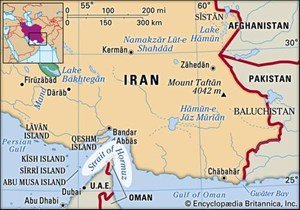(WO) – Intelligent Wellhead Systems, a provider of automation and digitalization solutions to the oil and gas industry, along with ProFrac, a provider of hydraulic fracturing services, announced the first successful field tests utilizing MQTT (Message Queuing Telemetry Transport) protocol for the safe and efficient transfer and visualization of wellsite data during hydraulic fracturing operations.
All data, measured and calculated, captured by wellsite sensors is fed into ProFrac’s MQTT broker. A third-party interface, adapted to work with the MQTT broker, communicates via MQTT to the IWS inVision Wellsite system which translates the data to the IWS standard data model. The data is then transferred to the inVision Live Cloud, where it is available to the operator at locations both onsite and remote.
Working with an Operator in the Haynesville, Intelligent Wellhead Systems (IWS) and ProFrac Services developed the solution that enhances wellsite connectivity and improves data transmission.
“Currently, wellsite data is transmitted during fracturing operations by a standard communications cable using CSV (Comma Separated Value) protocol. While this method is robust, it is quite limited in what it can do, particularly with changes in the data being transmitted.”
“A better solution is MQTT, a modern communication protocol that allows more data information than standard CSV protocol. Metadata, including the channel name for each data curve, can now be sent. Instead of mapping just the serial order of data, the data channel name can now be mapped as well,” commented Bob Duncan, IWS Vice President of Product Strategy.
The biggest drawbacks with the traditional method are typically the result of manual data entry. In addition, data is not sent at the start of the stage. Channels are not in the right order during set up.
With the new protocol, these variables are taken out of the equation. Not only is the mapping process simpler, but it’s also completed prior to the start of the job. The whole burden of channel mapping and data manipulation during the job is removed from the data van operator saving companies time and money.
“Once the job commences, data is now easily transmitted accurately and reliably. We are no longer dependent on aligning channel order and are now mapping based on previously agreed channels.”
“This negates the issues brought on by changing channel names or channel order during the job. From an Operator perspective, it’s been refreshing to see the service provider and aggregator work together and collaborate to provide a solution,” added the Completions Engineer from the Operating company.
This new protocol presents many advantages over the current method. The process of manually entering, changing or quality checking data is eliminated, significantly decreasing the time and cost of data manipulation. Enhanced data quality means added confidence in downstream operations. Reports, analysis, and planning are more reliable. Added trust between the operator, the service company, and the aggregator company bring new levels of assurance and added safety to wellsite operations.
The MQTT protocol has been successfully deployed on 2 two-well pads in the Haynesville shale and a three-well pad in West Texas. An additional three-well pad in the Haynesville is also ongoing.
This article was originally posted at www.worldoil.com



Be the first to comment